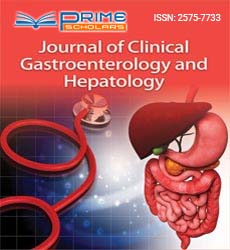Commentary - (2023) Volume 7, Issue 5
Cholecystitis: Understanding the Inflammation of the Gallbladder
Fiona Grace*
Department of Gastroenterology, University of Copenhagen, Denmark
*Correspondence:
Fiona Grace,
Department of Gastroenterology, University of Copenhagen,
Denmark,
Email:
Received: 02-Oct-2023, Manuscript No. IPJCGH-23-18374;
Editor assigned: 04-Oct-2023, Pre QC No. IPJCGH-23-18374 (PQ);
Reviewed: 18-Oct-2023, QC No. IPJCGH-23-18374;
Revised: 23-Oct-2023, Manuscript No. IPJCGH-23-18374 (R);
Published:
30-Oct-2023, DOI: 10.36648/2575-7733.7.5.44
Description
Cholecystitis, an inflammatory condition affecting the gallbladder, is a medical concern that can cause discomfort and complications if left untreated. The gallbladder, a small organ situated beneath the liver, plays a crucial role in digestion by storing bile. In this article, we explore the causes, symptoms, diagnosis, and treatment of cholecystitis, shedding light on a condition that affects millions worldwide. Cholecystitis typically arises when the normal flow of bile is obstructed, leading to the accumulation of bile in the gallbladder. This blockage can be caused by several factors. The most common cause of cholecystitis is the presence of gallstones, small, hardened deposits that form in the gallbladder. Gallstones can obstruct the cystic duct, preventing bile from draining properly. In some cases, cholecystitis may be a result of an infection in the gallbladder. This can occur when bile accumulates and stagnates, creating an environment conducive to bacterial growth. Rarely, tumors in the gallbladder or nearby structures can cause a blockage, leading to cholecystitis. Inflammation of the pancreas, known as pancreatitis, can cause swelling and compression of the gallbladder, contributing to cholecystitis often presents with a range of symptoms that can vary in severity. Common signs include. The hallmark symptom of cholecystitis is sudden and intense pain in the upper right abdomen. The pain may radiate to the shoulder or back and can last for several hours. Inflammation and infection in the gallbladder can lead to systemic symptoms such as fever and chills. Individuals with cholecystitis often experience nausea and may vomit as a result of the inflammation. The abdomen may be tender to the touch, especially in the area over the gallbladder. In severe cases, cholecystitis can lead to the yellowing of the skin and indicating potential blockage of the common bile duct. Prompt and accurate diagnosis is crucial for effective management of cholecystitis. The following diagnos-
tic tools are commonly employed. A detailed medical history, including a discussion of symptoms, is often the first step. A physical examination may reveal tenderness in the abdomen, especially over the gallbladder. Blood tests can help assess levels of certain enzymes and determine whether there is an infection or inflammation in the body. Ultrasound is frequently used to visualize the gallbladder and detect the presence of gallstones. Other imaging studies, such as CT scans or MRIs, may be employed to assess the extent of inflammation and identify any complications. A hepatobiliary iminodiacetic acid scan involves injecting a radioactive substance into the body to trace the flow of bile. This can help identify blockages in the bile ducts. A cholecystogram, which may involve oral or intravenous contrast, is an X-ray examination that provides detailed images of the gallbladder. The management of cholecystitis often involves a combination of medical and surgical interventions, depending on the severity of the condition. Cholecystitis, while a source of significant discomfort, is a manageable condition with appropriate medical intervention. Understanding the causes, recognizing symptoms, and seeking timely medical attention are crucial for effective diagnosis and treatment. With advancements in medical care and surgical techniques, individuals facing cholecystitis can anticipate a favorable prognosis, highlighting the importance of a collaborative approach between patients and healthcare professionals in managing this inflammatory condition of the gallbladder.
Acknowledgement
None.
Conflict Of Interest
The authors declare that they have no conflict of interest.
Citation: Grace F (2023) Cholecystitis: Understanding the Inflammation of the Gallbladder. J Clin Gastroenterol Hepatol. 7:44.
Copyright: © 2023 Grace F. This is an open-access article distributed under the terms of the Creative Commons Attribution Li- cense, which permits unrestricted use, distribution, and reproduction in any medium, provided the original author and source are credited.

